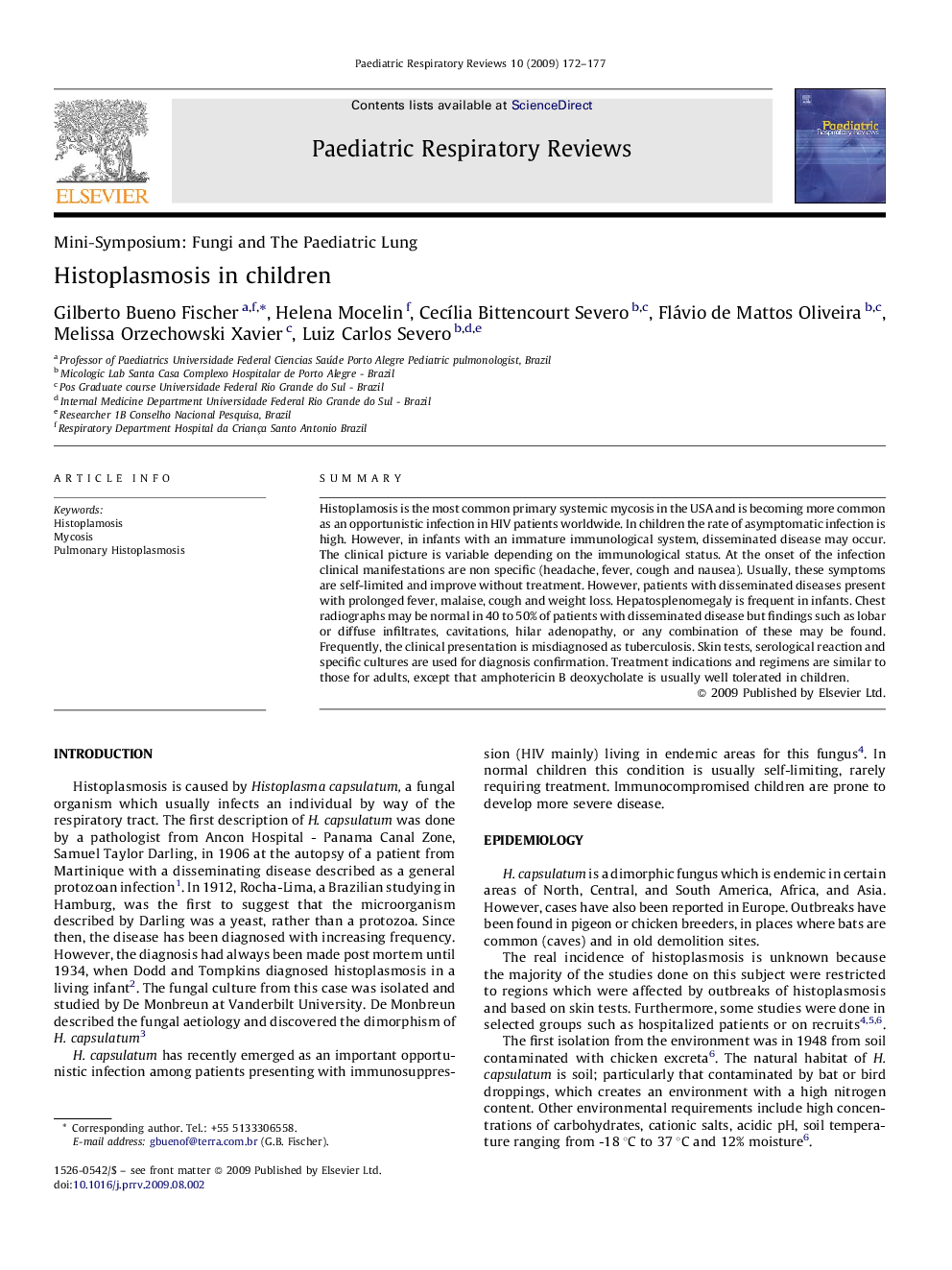| Article ID | Journal | Published Year | Pages | File Type |
|---|---|---|---|---|
| 4171271 | Paediatric Respiratory Reviews | 2009 | 6 Pages |
SummaryHistoplamosis is the most common primary systemic mycosis in the USA and is becoming more common as an opportunistic infection in HIV patients worldwide. In children the rate of asymptomatic infection is high. However, in infants with an immature immunological system, disseminated disease may occur. The clinical picture is variable depending on the immunological status. At the onset of the infection clinical manifestations are non specific (headache, fever, cough and nausea). Usually, these symptoms are self-limited and improve without treatment. However, patients with disseminated diseases present with prolonged fever, malaise, cough and weight loss. Hepatosplenomegaly is frequent in infants. Chest radiographs may be normal in 40 to 50% of patients with disseminated disease but findings such as lobar or diffuse infiltrates, cavitations, hilar adenopathy, or any combination of these may be found. Frequently, the clinical presentation is misdiagnosed as tuberculosis. Skin tests, serological reaction and specific cultures are used for diagnosis confirmation. Treatment indications and regimens are similar to those for adults, except that amphotericin B deoxycholate is usually well tolerated in children.
